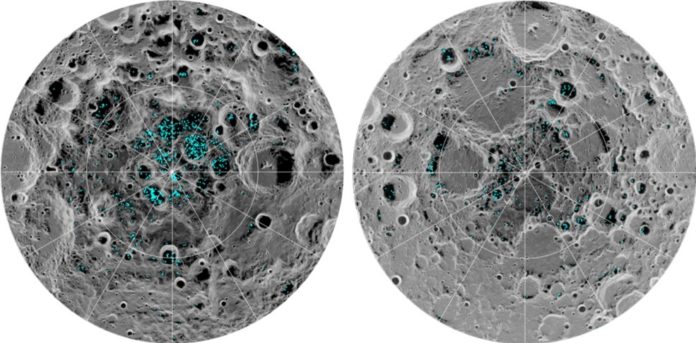NASA scientists using the data from NASA’s Moon Mineralogy Mapper (M3) instrument and identifies three specific signatures on the Moon. These signatures clearly suggest that there is water ice on the Moon’s surface.
Scientists observe the darkest and coldest parts of its polar regions. They found ice deposits that are patchily distributed and could possibly be ancient. At the southern pole, most of the ice is concentrated at lunar craters, while the northern pole’s ice is more widely, but sparsely spread.
The data collected by the instrument M3 suggests reflective properties of ice. In addition, it measures the unique way of the ice’s molecules absorbing infrared light.
The majority of the newly discovered water ice lies in the shadows of craters close to the posts, where the warmest temperatures never reach above – 250 degrees Fahrenheit. In view of the simple little tilt of the Moon’s turn pivot, daylight never achieves these regions.
Past perceptions indirectly discovered conceivable indications of surface ice at the lunar south pole, yet these could have been clarified by other phenomena, for example, abnormally intelligent lunar soil.
With enough ice sitting at the surface – within the top few millimeters – water would possibly be accessible as a resource for future expeditions to explore and even stay on the Moon, and potentially easier to access than the water detected beneath the Moon’s surface.
NASA is further planning to know more about this ice, how it got there and how it interacts with the larger lunar environment.
This study is published in journal PNAs.
